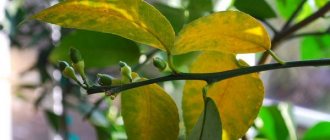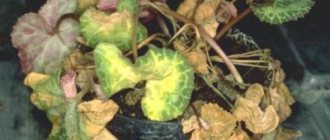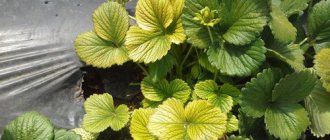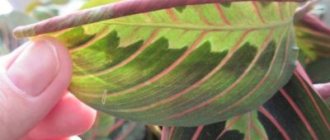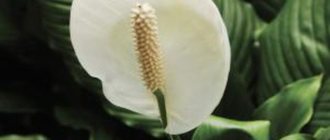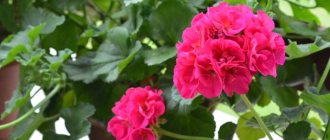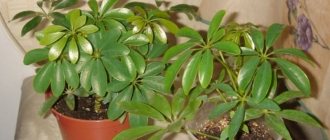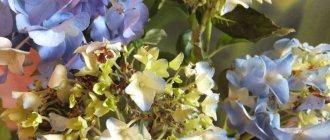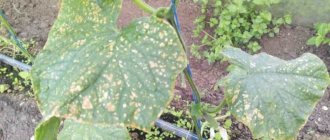Cycas or cycad palm is a plant of the Cycad family, which is often used for indoor landscaping. It is not too difficult to create optimal living conditions for him. Read more about caring for cycas and its types. But when inexperienced gardeners make mistakes in caring for it, the leaves of this plant turn yellow.
Yellowing of the leaves of the cycas indicates the presence of problems that must be quickly eliminated so that they do not lead to the death of the plant in the future.
Cycas leaves can turn yellow due to many unfavorable factors.:
- Improper lighting and air humidity;
- Presence of drafts;
- A sharp drop in temperature;
- Irregular watering and fertilization;
- Incorrect or irregular transplantation;
- Pests or diseases.
Incorrect lighting
Cycas loves bright light. For a cycas plant, the daylight hours should last at least 10 hours ; direct sunlight for 3-4 hours will not harm it.
However, if a cycad palm is kept in the sun all day long in the summer, it can get sunburned.
The burns appear as yellow, dry patches on the leaves. Therefore, if the plant was kept in diffused light, it must be accustomed to the sun gradually.
Lack of light is also painful for cycas . In partial shade, round yellow spots may appear on the leaves. They talk about the lack of sunlight. In this case, the cicada needs to be moved to a more illuminated place or additionally illuminated.
In winter in the middle zone, the duration of daylight hours is much less than that required for cicada. In winter, this plant needs to be illuminated with special lamps. Only in this case will it retain the intense green color of its leaves.
Problems when growing cycas
An explanation of the reasons why the leaves of the cicada turn yellow and curl. Description of cycas diseases. Elimination of problems and treatment of diseases from specialists with photos.
Why do cycas leaves turn yellow? This may be the result of waterlogging of the soil, natural aging of the flower, or lack of light.
If the cycas is an adult, its lower leaves turn yellow (1-2 per year) - this is the norm. The old leaves of the cycas die off over time. This means that the plant will soon throw out new, fresh foliage. All yellowed leaves of the flower must be removed.
If the leaves of the cycas palm tree turn yellow en masse, you need to pay attention to watering and the light level of the plant. Since the cicada is native to tropical countries, it needs a lot of sunlight. This should be the south side of the house. However, the flower is shaded from direct light. In winter, the flower is illuminated. It is due to the lack of light in indoor conditions that the cycas has yellow leaves.
Low humidity
Cycas is a tropical plant for which high air humidity is important.
Without this, its leaves begin to turn yellow and dry out at the edges. In the summer, the cicada needs to be sprayed regularly , but not with cold water. Wiping the leaves with a wet sponge and rinsing them in the shower gives good results.
In winter, during the heating season, you should not keep cicadas near heating appliances. It is not recommended to spray it in winter.
It is necessary to increase air humidity only in very hot and stuffy rooms. To do this, the palm tree is placed in a tray with coarse sand, which is regularly moistened.
Rules of care
Cycas is a very beautiful tropical plant that looks like a small palm tree. Many gardeners love it for its exotic appearance and the fact that it can decorate any interior. But it is a rather finicky plant to care for. Due to improper care, its leaves begin to turn yellow, curl and fall off. If you don’t catch it in time, he may finally die.
If the flower grows very slowly, there is no need to worry, as this is its characteristic. The air in the room should be slightly humid and cool; it does not tolerate stuffy and dry air. In order for the palm tree to always please with its healthy and lush appearance, it must be periodically fed with organic fertilizers without potassium and magnesium in the composition.
If suddenly the leaves of an indoor palm tree turn yellow, then you need to find out whether it has entered a dormant period, which usually begins in late autumn and ends in early spring. During this period, it simply stops growing, and some of its greenery acquires a slightly yellowish tint. If the lower leaves turn yellow and fall off, then there is no need to worry, they have simply outlived their useful life, and new young leaves will soon grow. There are the following factors that can cause the top to turn yellow.
Even overwatering can cause yellowing of the foliage. Due to excess moisture, its roots suffer first, and then the top begins to dry out. Usually in summer it is enough to water twice a week, and in winter a little less often, depending on the humidity and air temperature. In a cool room, watering is done once a week. And under no circumstances should the soil be allowed to dry out. Before watering the flower, poke your finger into the soil. If it is wet at a depth of 1 centimeter, then watering can be postponed.
Read also: Perennial delphiniums
Watering is always done with water at room temperature and pre-settled. The liquid is poured directly into the soil, being careful not to get onto the top or into the pine cone. Every month, wipe the leaves with a damp cloth to remove dust. If you transplant into another pot, then there must be drainage at the bottom, which will protect the roots from excess moisture. The pot itself must have drainage holes. Watering is best done through a tray rather than from above.
Drafts and sudden drop in temperature
The palm tree should not be left in a draft. Even in warm weather, a draft can cause yellowing of the plant's leaves. For it, you need to choose a place away from the windows and balcony doors, and during ventilation it is recommended to take the palm tree to another room.
In winter, when ventilating the room where the cycas stands, the air temperature can drop sharply, which will adversely affect the health and appearance of the plant.
The flower cannot tolerate temperatures below 12ºC, so even a short-term decrease in temperature leads to yellowing and curling of the leaves.
Improper watering
Cycas loves abundant watering during active growth in spring and summer.
However, the plant should not be flooded; the soil should dry out by 2-3 cm on top, and only then can it be moistened again. Watering is carried out only with soft water. You should also not overdry the earthen ball. Often yellowing of the leaves is a consequence of drying out roots. Do not allow water to get on the cycas trunk and on the bases of the leaves .
This can lead to rot, which becomes noticeable when the plant's leaves begin to turn yellow. If water stagnates in the soil due to excessive watering or poor drainage, root rot may begin. In this case, the leaves of the plant begin to turn yellow at the base.
Root rot can be overcome by replanting the cycas into new soil. In this case, you need to take care of good drainage, and be sure to remove all rotten roots.
Why do cycas leaves turn yellow?
Yellowing of the leaves of this flower is often found in apartment conditions, but the problem can be easily eliminated by understanding the reasons and eliminating them. To do this, you need to analyze the living conditions of the plant and remove the influence of negative factors, which we will consider below.
Excess or deficiency of moisture
Cycas is very demanding when it comes to watering, so you need to pay special attention to the amount of moisture. One of the reasons for a change in the color of greenery in a plant may be a lack of moisture. Some gardeners reduce the frequency of watering too much in winter, but this can only be done if the temperatures in the room have also dropped. But if the batteries are operating at full capacity and the apartment feels hot, this can lead to even greater evaporation of moisture than in summer: the plant may simply die from dehydration. But the main reason that the cicas has turned yellow is overwatering.
Did you know? Eastern medicine considers cycas as a medicinal plant. Its leaves are used in the treatment of cancer, as well as for severe hematomas.
It is better to leave the soil a little dry than to flood it until it becomes muddy. Due to abundant moisture, the roots of the plant may rot, which will lead to the loss of the flower. To remove unwanted changes in the plant, it is necessary to initially establish a watering regime. In summer, you need to water the cycas moderately, but do not allow the soil to dry out completely. In winter, the amount of moisture must be reduced, but the volume of watering should depend on the air temperature inside the room: the colder the air, the less often it is necessary to moisten the soil, and as the temperature rises, it is necessary to increase the amount of water.
In summer, it is advisable to cover the plant cone with moss, which needs to be moistened with a spray bottle as it dries, not neglecting the leaves of the cycas. The most correct method of watering is considered to be moistening through a tray, since if moisture constantly gets on the pine cone, the risk of rotting on it increases. This can cause the plant to die very quickly.
Familiarize yourself with the basic rules for planting indoor plants.
The water should be pre-settled and soft, and its temperature should be the same as room temperature or be a little warmer. It is not advisable to water the plant in such a way that liquid falls on its crown. To provide the cicada with complete moisture, it is better to simply irrigate it or wrap the entire trunk with moistened moss. It is also recommended to wipe the foliage from time to time with a sponge soaked in warm water and well wrung out.
Lack of useful components in the soil
Due to an insufficient amount of minerals in the soil, the plant most often sheds its leaves, but if other factors are added to this, the cycas may turn yellow. It is recommended to feed the cycas at the time of its active development: usually this period occurs in April - August.
It is necessary to fertilize the soil 2 times a month. In the store you can buy fertilizer for palm trees or any universal fertilizer that does not contain magnesium and potassium. You can also use cow or horse manure, which must be diluted a little with water.
Wrong choice of location
If the air in the room is musty and the plant cannot be ventilated, this will lead to a change in the color of the greenery. In addition, if little light falls on the flower, this will lead to deformation of the new leaves.
We recommend that you learn how to feed indoor plants at home.
You should also avoid drafts - this situation often occurs in northern latitudes or in winter. In order to avoid troubles, when ventilating the room, take the flower out of the room or cover it.
Pests
The described houseplant can often be attacked by various pests - most often scale insects and spider mites. Flower owners often begin to pay attention to this only after the cicada has turned yellow. Spider mites usually attack the plant if the air in the apartment is too dry. Usually it can be seen by thin webs on the leaves, but the insect itself is hardly noticeable. The parasite can be removed using chemicals, such as, for example, Actellik.
However, if adult insects die, there is no guarantee that there are no larvae left on the cypress, on which the poison does not act, so it is better to repeat the treatment with the drug after a few days. You can also use laundry soap, foaming it strongly. The foam must be applied to the foliage and covered with polyethylene for 24 hours. In the future, it is recommended to repeat the procedure every other day.
Important! After you have treated the plant with soap and made sure that there are no more pests, the flower should be thoroughly rinsed with water.
To prevent the reappearance of the pest, it is recommended to moisten the cycas with a spray bottle daily. Another enemy of the cicada is the scale insect. It can attack a flower due to the cold air temperature in the room and overwatering of the soil. In this case, the greens not only turn yellow, but also dry out. In addition, white spots may appear on it. The plant can also be treated with Actellica and quarantined for a week.
Lack of feeding
Insufficient fertilizing or its absence can lead to yellowing of the leaves of the cycad palm. Feed the plant twice a month in spring and summer. It is advisable to use special mixtures for feeding cycads.
Sometimes, despite fertilizing the soil, the plant still suffers from a lack of microelements. This can happen if it has been watered with hard water for a long time. The accumulation of salts in the soil does not allow the plant to feed normally. In this case, it is necessary to transplant the plant into new soil.
With a lack of nitrogen, the leaves of the plant gradually turn pale and turn yellowish . This usually occurs during active growing season. To return the palm tree to its bright green color, you need to use nitrogen fertilizers.
Excessive feeding also harms the plant.
A high concentration of fertilizers can damage the root system, and this will quickly affect the color of the leaves. Therefore, fertilizing must be carried out carefully, observing the required concentration of fertilizers.
Cycas breeding
Over time, new “babies” appear on the cycad. Most often, they are used to propagate the plant: the daughter shoot is carefully cut from the trunk, and the cut site must be sprinkled with crushed charcoal or sulfur. Having begun its development from an aerial bulb, the “baby” acquires its own crown, and sometimes even adventitious roots. This shoot is air-dried for several days, then planted in an earthen mixture that contains peat, sand, as well as leaf soil and granite chips. Watering is carried out moderately until the root system of the shoot is completely formed. You can use a soil heating system or root formation stimulants, such as Kornevin.
Propagation of cycas by seeds is less common, because this method takes a lot of time. Seed germination lasts for about three years. After sowing, they germinate within one and a half to two months under soil heating conditions.
Thus, not everyone is suitable for keeping indoors. Caring for it requires a lot of effort. Slow leaf growth is unlikely to satisfy novice gardeners. However, if you have the desire, attention, knowledge of the intricacies of care and patience, over time you can get a real giant from a small plant that will bring an exotic touch to the interior.
Lack of transplantation or incorrect implementation
Transplantation is an important part of caring for the cicass.
Until the age of 5, the roots of the palm tree grow very quickly, and they become cramped in the pot. That's why they are replanted every year. If the transplant is not done, the crowded conditions will lead to irreversible changes: the leaves of the plant will gradually turn yellow and dry out.
Adult cycad palms grow much slower than young ones. They are replanted every 5 years. The plant, which is repotted regularly, has intense green foliage and looks healthy.
Improper replanting can also cause leaves to turn yellow . If the roots are damaged or the palm tree is deeply buried in the ground, it will be sick for a long time and may even die. In this case, yellowing of its leaves is inevitable.
Causes of yellowing of cycas leaves
Cycas or cycad palm is a plant of the Cycad family, which is often used for indoor landscaping. It is not too difficult to create optimal living conditions for him. Read more about caring for the cicada and its types. But when inexperienced gardeners make mistakes in caring for it, the leaves of this plant turn yellow.
Yellowing of the leaves of the cycas indicates the presence of problems that must be quickly eliminated so that they do not lead to the death of the plant in the future.
Cycas leaves can turn yellow due to many unfavorable factors.:
- Improper lighting and air humidity;
- Presence of drafts;
- A sharp drop in temperature;
- Irregular watering and fertilization;
- Incorrect or irregular transplantation;
- Pests or diseases.
Pests
Very often, cycas leaves turn yellow when the plant is damaged by pests. This happens very rarely, but sometimes harmful insects attack a cycad standing in the garden or on the terrace. Most often, the plant is harmed by spider mites, scale insects, thrips and mealybugs.
Pests can be completely destroyed only by using insecticidal preparations, for example, Actellik. It is necessary to spray the plant, not forgetting about the methods of protection. If necessary, treatment should be repeated after 10 days.
Diseases and pests: treatment methods
Cycas cannot be called a weak plant, but improper care weakens the plant’s immunity, which can lead to attack by unwanted pests and the appearance of diseases. Insects such as scale insects, thrips, and spider mites pose a danger. The trunk, petioles and leaves become their habitat. The results of the vital activity of pests are reflected in the health of the plant: yellowish and purple spots appear on the foliage, it dries out and falls off.
Spider mite
It starts if the air in the room is very dry. You can identify it by the web that appears. The leaves wither and then turn yellow, which leads to their falling off.
How to deal with it?
Wipe the cicas with a sponge, having previously soaped it. Rinse the plant in the shower, covering the soil in the pot with a bag to avoid getting it wet. The plant must be sprayed regularly. If the cycas is severely affected by the pest, it is better to immediately treat it with Actellik (0.15%). Dilute 1-2 ml of product in 1 liter of water.
Thrips
The cause of thrips is high temperature and low humidity. If you turn the leaf over to the reverse side, you can see many tubercles (colonies). The upper part of the leaf becomes covered with light dots, becoming grayish-brown over time.
Ways to fight
Cycas must be treated (sprayed) with insecticides such as Decis, Inta-vir, Fitoverm. Repeated processing is required.
When a plant is infected with scale insects and mealybugs
Pests can be collected by hand using a damp cloth. After two days, you should inspect the flower again; suddenly, during the initial inspection, the scale insect went unnoticed under the leaf. This inspection should be carried out throughout the week. If there are a lot of pests, you won’t be able to deal with them manually. Insecticides will come to the rescue, for example, Corbofos (add 15 drops to 1 liter of water). You will have to process several times, with a five-day interval between treatments.
Rot
Not only the leaves can hurt, but also the root system and the lower stem part (caudex). Rot on these parts of the cycas is caused by overwatering. If a disease occurs, the palm tree must be carefully removed from the pot and the roots removed from the soil. Using a sterile knife, trim away darkened areas, blackness and rot from the protruding part of the trunk above the soil. Remove parts of infected roots. Place the plant in a fungicide solution for 30 minutes. Change the soil at this time.
Disinfect the pot with dissolved potassium permanganate or boiling water. After treatment, sprinkle each cut with crushed charcoal and allow the treated areas to dry. Before planting, moisten the roots with a stimulant to form a root system. Remember that when recovering from an illness, the cycas may shed its foliage at the time of rooting.
This exquisite plant requires special attention. If proper care is taken at home, the cycas will reciprocate the gardener's feelings. Exotic cycad will create an atmosphere of comfort, mystery and uniqueness in the room!
